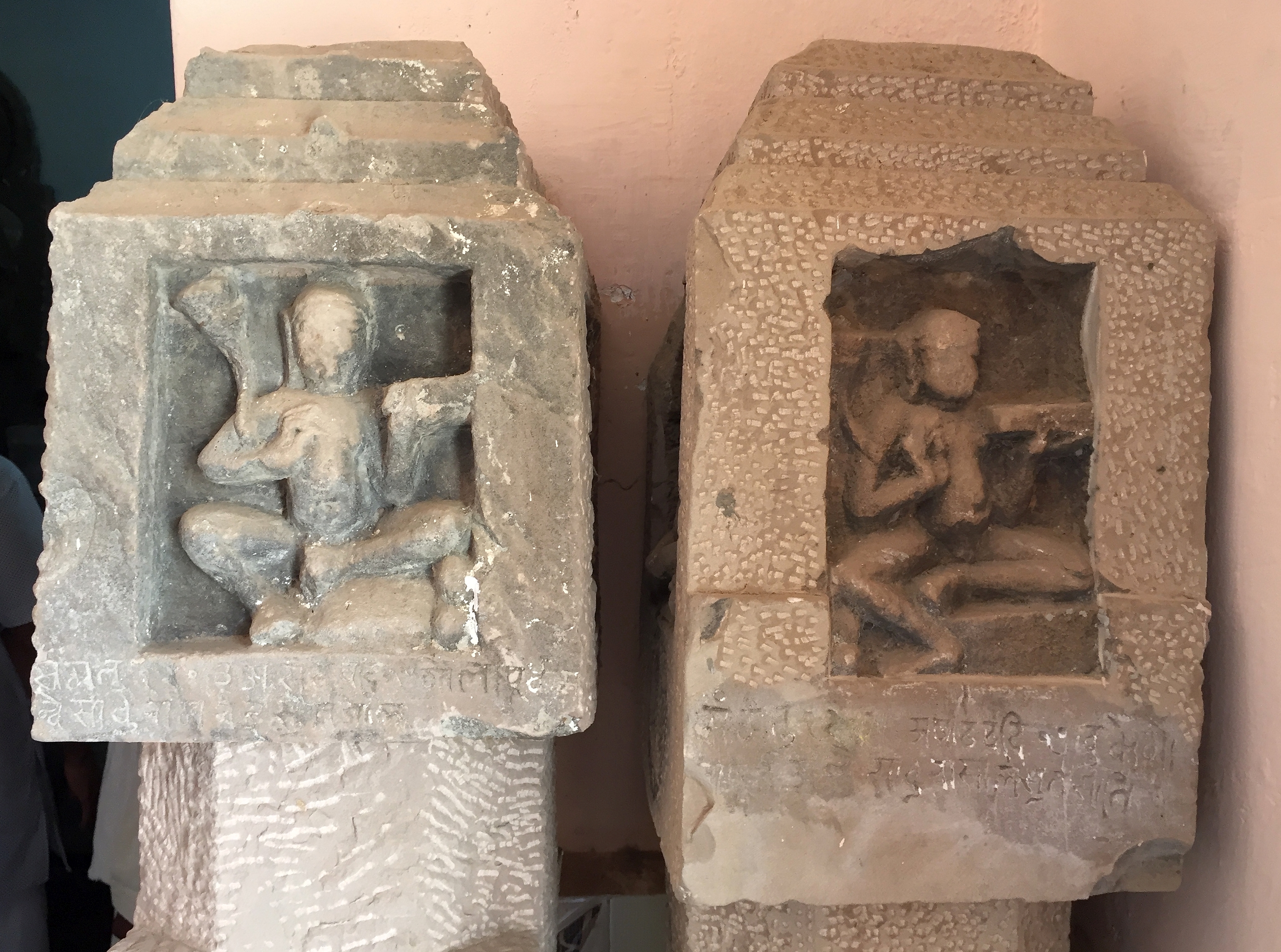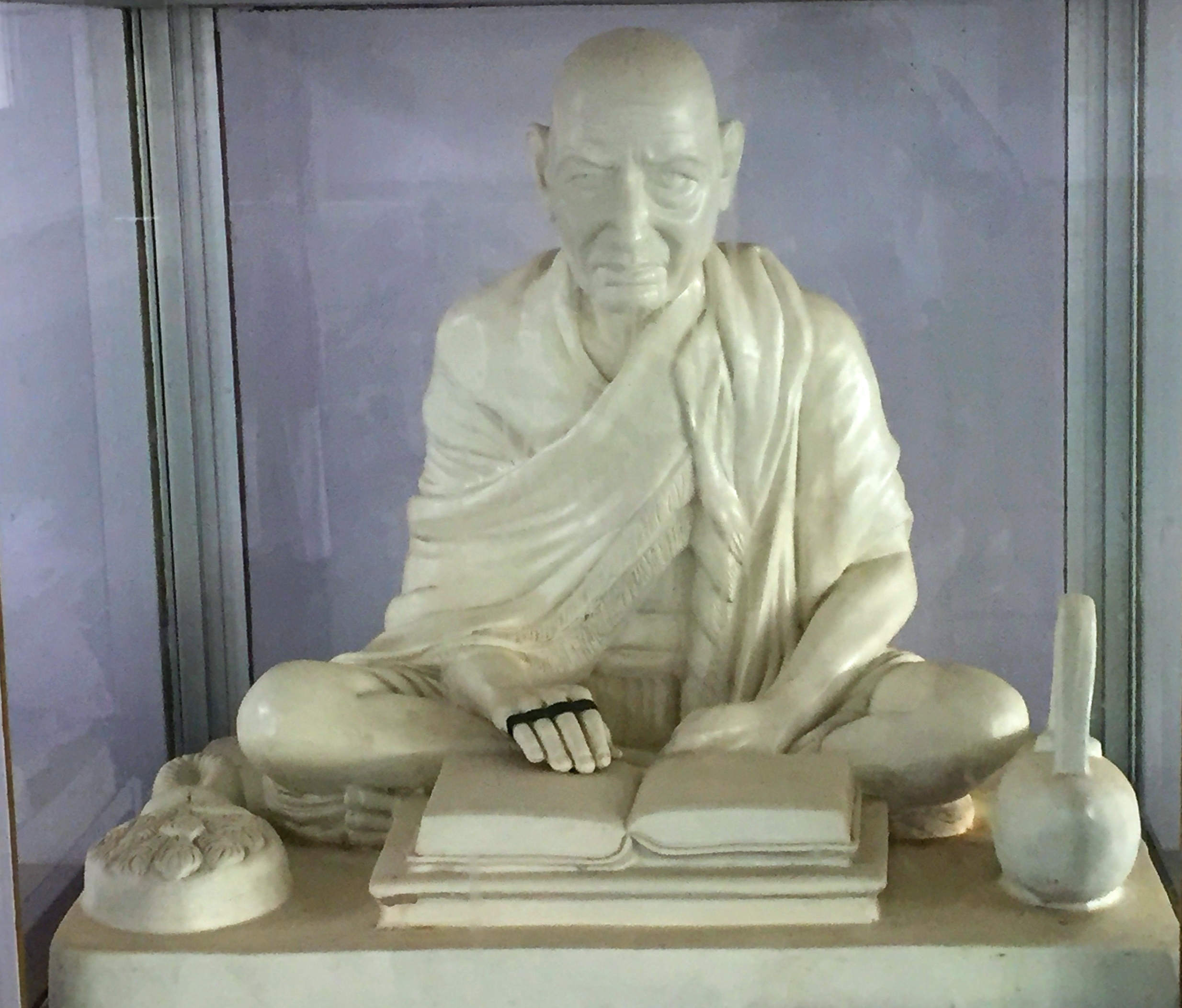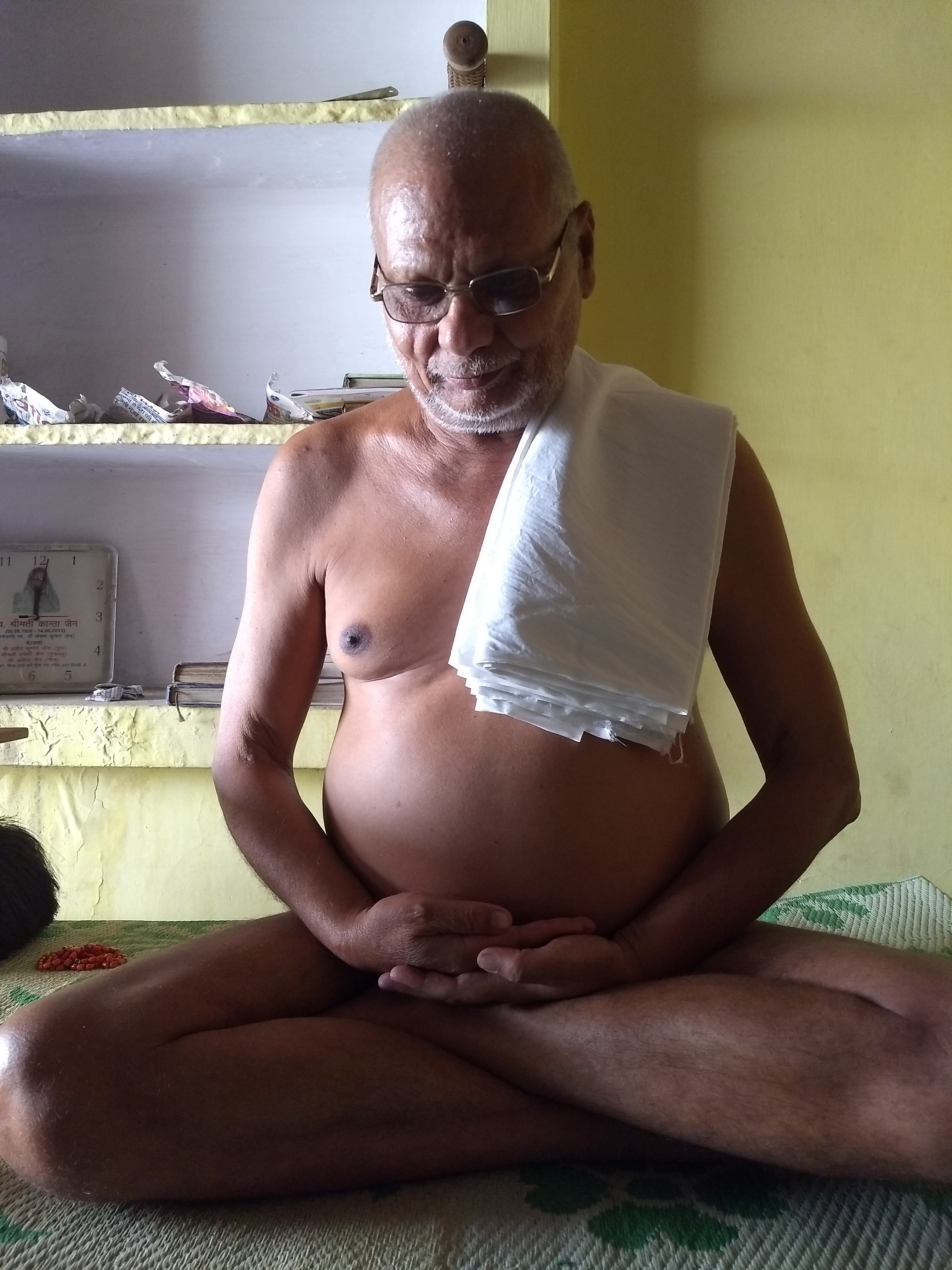|
Golapurva
Golapurva is an ancient Jain community from the Bundelkhand region of Madhya Pradesh. History Jainism had a continuous presence in the Bundelkhand region since antiquity. Jainism was flourishing during the Gupta period at Vidisha region. The Durjanpur idols installed during the rule of Ramagupta date to about 365 AD. The Udaigiri cave Parshvanath inscription mentioning the lineage of Bhadranvaya is dated to 425 AD. The great Shantinath temple at Deogarh was built before 862 CE, suggesting existence of a prosperous Jain community in this region. A number of Chandella-period inscriptions mentioning the Golapurva community have been found. These include Jagatsagar Lake (now in Dhubela museum) (Sam. 1119 i.e. 1062 AD), Urdamau ( Sam. 1149, 1171 i.e. CE 1092 and 1114), Bahuriband (1125 AD), Mau (sam 1199), Jatara (Sam 1199), Aharji (sam 1202), Chhatarpur (sam. 1202), Paporaji (sam 1202), Mau (sam 1203), Navagarh (sam 1195, 1203), Mahoba (sam. 1219) etc. With the exception of ... [...More Info...] [...Related Items...] OR: [Wikipedia] [Google] [Baidu] |
Navagarh
Navagarh is a Jain Tirth (pilgrimage site for Jainism) in India. It is located at the Nabai village near Sojna in central India in Uttar Pradesh, just across the border from Madhya Pradesh. It is 65 km east from Lalitpur and 110 km north from Sagar. This ancient cite was excavated in 1959. It is the only tirth in India where the main deity is the ancient image of Lord Aranatha, preserved in the ancient underground chamber. Navagarh Tirth Navagarh is a place full of natural attractive beauty being surrounded by rocky wilderness. It is famous for the exceptionally crafted life size image of Lord (Aranatha) in standing (Kayotsarga) posture. It is in the Chandela style and finely polished. It does not have an inscription, but a fragment of a Shantinatha image from the same chamber has the date samvat 1202. There are nearby prehistoric rock shelters where Jain monks used to meditate. Some of them contain prehistoric drawings. Discovery and development In 1940s the site ... [...More Info...] [...Related Items...] OR: [Wikipedia] [Google] [Baidu] |
Nainagiri
Nainagiri is a major pilgrimage site for Jainism in India. It is located in the central Indian state of Madhya Pradesh, it is 12 km from Dalpatpur and 25 km from Bukswaha. This tirth, also known as Reshandigiri, is a Siddha Kshetra where five ancient saints including Varadatta had attained nirvana. Significance According to ancient Nirvanakanda text: पासस्स समवसरणे सहिया वरदत्त मुणिवरा पंच , रिस्सिन्देगिरि सिहरे णिव्वाण गया णमो तेसिं , , Translation: Here at Resandigiri, the samosharana of Lord Parshvanath had come and Varadatta etc. five munis had attained nirvana. We bow to them. Similar mentions are made in Hindi Nirvanakanda (1684 AD) of Bhaiya Bhagavatidas, and 1882 marathi text of Bhattaraka Devendrakirti of Karanja. Nainagiri Jain Tirtha Complex Naingiri Tirthkshetra includes a temple complex on the hill, two ... [...More Info...] [...Related Items...] OR: [Wikipedia] [Google] [Baidu] |
Bahuriband
Bahuriband (or Bahoriband), near Katni in Madhya Pradesh, is a famous inscription at the feet of a colossal stone image of Jain Tirthankara Shantinath. The colossal statue is in height. Inscription The inscription reads: :संवत १०..फल्गुन वदि ९ सोमे श्रीमद गयाकर्णदेव विजयराज्ये राष्ट्रकूटकुलोद्भव महासमन्ताधिपति श्रीमद् गोर्ल्हणदेवस्य प्रवर्धमानस्य , , श्रीमद् गोल्लापूर्वाम्नाये वेल्लप्रभाटिकायामुरुकृताम्नाये तर्कतार्किक चूडामणि श्रीमन् माधवनन्दिनानुगृहीतः तस्साधु श्री सर्व्वधरः तस्य पुत्र महाभो ... [...More Info...] [...Related Items...] OR: [Wikipedia] [Google] [Baidu] |
Balachandra Shastri
Pandit Balachandra Siddhanta-Shastri (पंडित बालचंद्र सिद्धान्तशास्त्री) was a scholar and linguist who bridged classical and modern scholarship in Jainism during the mid-20th century. Life Born in 1905 at Sonrai, in the district of Sagar in Bundelkhand, Madhya Pradesh, he attended the traditional Jain institution at Sadhumal. He later studied at Kashi Vidyapith. He worked for several Jain institutions in India during his life as a scholar. His efforts resulted in the publication of several major Jain texts. He died in Hyderabad in 1985. Contributions His contributions include * Satkhandagama along with Dhavala: volumes 6-16, translation.http://www.jainworld.com/JWHindi/Books/shatkhandagama-5/fristpage.pdf SHATKHANDAGAMA OF PUSHPADANTA AND BHOOTABALI WITH THE COMMENTARY DHAVALA OF VEERASENACHARYA * Tiloyapannatti, vol. 1-2, translation. * Padmanandi's Panchvinshati, translation and commentary. * Jain Lakshnavali (Ja ... [...More Info...] [...Related Items...] OR: [Wikipedia] [Google] [Baidu] |
Golalare
Golalare (Sanskrit गोलाराडे, Hindi गोलालारे ) is a Jain community of Bhadawar and Bundelkhand region in India. Their original center is the Bhind-Etawah region on the banks of the Chambal river. Some of them have migrated to Bundelkhand region. A section of the Golalare are now known as Kharaua. Some of the bhattarakas of Balatkara Gana who had a seat at Ater, and Rura, were born in this same community. History According to some of the inscriptions, the Golalare are descendants of the ancient Ikshvakus.http://hindi.webdunia.com/religion/religion/jainism/0708/11/1070811035_1.htm - A Gwalior Fort Inscription Samvat 1525, एक पत्थर की बावड़ी (दक्षिण-पूर्व समूह) See also * Chanderi * Balatkara Gana * Jainism in Bundelkhand * Golapurva Golapurva is an ancient Jain community from the Bundelkhand region of Madhya Pradesh. History Jainism had a continuous presence in the Bundelkhand re ... [...More Info...] [...Related Items...] OR: [Wikipedia] [Google] [Baidu] |
Aharji Jain Teerth
Aharji Jain Teerth is a historical pilgrimage site for Jainism located in Aharji, Madhya Pradesh, on the road from Tikamgarh to Chhatarpur. Aharji Jain Teerth Aharji Jain Teerth is famous for the miraculous 18 feet monolithic idol of Lord (Shantinath) in Kayotsarga posture. The main temple is famous for the beautiful monumental image of Lord Shatinath from the Chandella period. Aharji was a major Jain centre during the Chandella period. The inscriptions in this temple date back to 1180 CE ( V.S. 1237). It was the last major temple to be built here in the Chandella period. Several other smaller temples were built here at the same time as the main temple. Excavations have found a large number of Jain images that were installed here from 954CE to 1275 CE (VS 1011 to V.S. 1332), spanning the reigns of six Chandella rulers. The inscriptions give the names of 32 separate Jain communities that had built these temples, including Golapurva, Parwar, Khandelwal, Golalare, Jaiswal, ... [...More Info...] [...Related Items...] OR: [Wikipedia] [Google] [Baidu] |
Jain
Jainism ( ), also known as Jain Dharma, is an Indian religion. Jainism traces its spiritual ideas and history through the succession of twenty-four tirthankaras (supreme preachers of ''Dharma''), with the first in the current time cycle being Rishabhadeva, whom the tradition holds to have lived millions of years ago, the twenty-third ''tirthankara'' Parshvanatha, whom historians date to the 9th century BCE, and the twenty-fourth ''tirthankara'' Mahavira, around 600 BCE. Jainism is considered to be an eternal ''dharma'' with the ''tirthankaras'' guiding every time cycle of the cosmology. The three main pillars of Jainism are ''ahiṃsā'' (non-violence), ''anekāntavāda'' (non-absolutism), and '' aparigraha'' (asceticism). Jain monks, after positioning themselves in the sublime state of soul consciousness, take five main vows: ''ahiṃsā'' (non-violence), '' satya'' (truth), '' asteya'' (not stealing), ''brahmacharya'' (chastity), and '' aparigraha'' (non-possessiveness). Th ... [...More Info...] [...Related Items...] OR: [Wikipedia] [Google] [Baidu] |
Kshullaka
A kshullak (or kshullaka, lit. small or junior) is a junior Digambar Jain monk. A kshullak wears two garments as opposed to a full monk who wears no clothes.Jinendra Varni, Jainendra Siddhanta Kosa, V.2, pages, 188-189 Specifically a Kshullaka is a Shravaka of the highest degree at 11th Pratima. A kshullak is sometimes referred to by the earlier title Varni, even though Varni corresponds to the seventh Pratima. Well known kshullakas include: * Kshullaka Ganeshprasad Varni * Kshullaka Jinendra Varni A Digambara Jain shravaka at the highest rank of 11th pratima is either a kshullaka or an ailaka. He is just one step below a full muni. His conduct is prescribed in Vasunandi Sravakachara and Lati Samhita. A kshullaka wears a loin cloth (kaupina) and a white rectangular cloth as a wrap. An ailak uses only a loin cloth. A kshullaka may live in a house or may be a wanderer. He may eat food placed in his palms, or from a container. He eats once a day. He may beg from a single ... [...More Info...] [...Related Items...] OR: [Wikipedia] [Google] [Baidu] |
Ikshvaku Dynasty
The Solar dynasty (IAST: Suryavaṃśa or Ravivaṃśa in Sanskrit) or the Ikshvaku dynasty was founded by the legendary king Ikshvaku.Geography of Rigvedic India, M.L. Bhargava, Lucknow 1964, pp. 15-18, 46-49, 92-98, 100-/1, 136 The dynasty is also known as ("Solar dynasty" or "Descendants of the Sun") which means that this dynasty prays to the Sun as their God and their originator (the Gayatri Mantra is a prayer offered to the Sun God as the Sun is the main deity of the Solar Dynasty), and along with Lunar dynasty comprises one of the main lineages of the Kshatriya Varna. The first ''Tirthankara'' of Jainism, Rishabhdeva himself was King Ikshvaku. Further, 21 Tirthankaras of Jainism were born in this dynasty. According to Buddhist texts and tradition, Gautama Buddha descended from this dynasty. Many later kings of the Indian subcontinent claimed to be of Suryavamsha descent. The important personalities belonging to this royal house are Mandhatri, Muchukunda, Ambarisha, B ... [...More Info...] [...Related Items...] OR: [Wikipedia] [Google] [Baidu] |
Rishabha (Jain Tirthankar)
Rishabhanatha, also ( sa, ऋषभदेव), Rishabhadeva, or Ikshvaku is the first (Supreme preacher) of Jainism and establisher of Ikshvaku dynasty. He was the first of twenty-four teachers in the present half-cycle of time in Jain cosmology, and called a "ford maker" because his teachings helped one across the sea of interminable rebirths and deaths. The legends depict him as having lived millions of years ago. He was the spiritual successor of Sampratti Bhagwan, the last Tirthankar of previous time cycle. He is also known as Ādinātha which translates into "First (''Adi'') Lord (''nātha'')", as well as Adishvara (first Jina), Yugadideva (first deva of the yuga), Prathamarajeshwara (first God-king), Ikshvaku and Nabheya (son of Nabhi). Along with Mahavira, Parshvanath, Neminath, and Shantinath; Rishabhanath is one of the five Tirthankaras that attract the most devotional worship among the Jains. According to traditional accounts, he was born to king Nabhi and q ... [...More Info...] [...Related Items...] OR: [Wikipedia] [Google] [Baidu] |
Vardhamana Purana
Mahavira (Sanskrit: महावीर) also known as Vardhaman, was the 24th ''tirthankara'' (supreme preacher) of Jainism. He was the spiritual successor of the 23rd ''tirthankara'' Parshvanatha. Mahavira was born in the early part of the 6th century BCE into a royal Kshatriya Jain family in ancient India. His mother's name was Trishala and his father's name was Siddhartha. They were lay devotees of Parshvanatha. Mahavira abandoned all worldly possessions at the age of about 30 and left home in pursuit of spiritual awakening, becoming an ascetic. Mahavira practiced intense meditation and severe austerities for twelve and a half years, after which he attained '' Kevala Jnana'' (omniscience). He preached for 30 years and attained Moksha (liberation) in the 6th century BCE, although the year varies by sect. Historically, Mahavira, who revived and preached Jainism in ancient India, was an older contemporary of Gautama Buddha. Jains celebrate ''Mahavir Janma Kalyanak'' every ye ... [...More Info...] [...Related Items...] OR: [Wikipedia] [Google] [Baidu] |
Sanadhya Brahmin
The name can also be spelled as Sanadya Brahmin or Sanadh Brahmin, or Sanah Brahmin or Sanidya Brahmin or Sanadhya Gour Chaurasiya Brahmin are a community of agrarian Brahmins. Their main concentration is in western Uttar Pradesh, Rajasthan, Delhi and Madhya Pradesh Madhya Pradesh (, ; meaning 'central province') is a state in central India. Its capital is Bhopal, and the largest city is Indore, with Jabalpur, Ujjain, Gwalior, Sagar, and Rewa being the other major cities. Madhya Pradesh is the seco ... area of India. The Hindi poet Keshabdasa Mishra was a Sanadhya, and praised his community in his ''Ramachandrika''. References {{reflist Brahmin communities of Uttar Pradesh Brahmin communities of Madhya Pradesh Brahmin communities of Rajasthan Brahmin communities of Delhi ... [...More Info...] [...Related Items...] OR: [Wikipedia] [Google] [Baidu] |






.png)